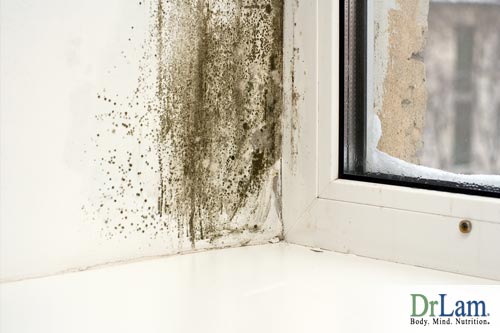 When most people think of air pollution, they typically think of smoke or smog, but mold may be more of a threat than most other types of air pollution. Mold tends to grow in hidden areas, releasing mycotoxins into the air and causing a variety of mold toxicity symptoms. Hidden mold may be causing or contributing to many of your symptoms and may even be aggravating adrenal fatigue. Mold expert Jack Thrasher estimates that about a quarter of all homes and nearly half of all schools have some degree of mold infestation, not to mention the workplace.
When most people think of air pollution, they typically think of smoke or smog, but mold may be more of a threat than most other types of air pollution. Mold tends to grow in hidden areas, releasing mycotoxins into the air and causing a variety of mold toxicity symptoms. Hidden mold may be causing or contributing to many of your symptoms and may even be aggravating adrenal fatigue. Mold expert Jack Thrasher estimates that about a quarter of all homes and nearly half of all schools have some degree of mold infestation, not to mention the workplace.
Several common health conditions can be caused or aggravated by mold exposure, but few people are aware of just how insidious these tiny little fungi can be. Awareness is half the battle. Only once you are aware of how mold toxicity symptoms may affect you, and how to find out whether you may be exposed, can you begin to remediate mold in your home and recover from its effects.
Some health conditions that research has linked to mold exposure include:
As you can see, mold is more than a nuisance and can harm a lot more than your property, especially if you’re run down with adrenal fatigue. In adrenal fatigue, your body is not able to keep up with the stress and energy requirements needed from it. As such, any additional stressor, such as mold, only worsens the condition.
In terms of toxicity, the toxins released by mold may well be worse even than heavy metals or pesticides because of the way they suppress the immune system. While these toxins are more likely to impact those whose immune systems are already lowered and those with multiple sensitivities, even healthy people with robust immune systems can fall prey to the effects of mold exposure.
Some types of mold are beneficial. Mold is a natural part of the environment and plays a critical role in breaking down organic matter, such as the leaves that litter the forest floor. Mold is also important in the world of medicine. It was mold in a petri dish that gave us penicillin, the very first antibiotic. Finally, certain kinds of mold are used to make several foods, including cheese, sour dairy products, fermented foods, and alcoholic beverages. The problem arises when mold settles in and begins to grow out of control indoors, such as on food, building materials like drywall and wood, or items such as clothing or books.
Mold is a fungus that grows in dark, damp areas and reproduces by releases spores into the air. There are more than a thousand different types of mold that can grow in homes. Not all types of mold cause health problems in all individuals, though they all can cause property damage.
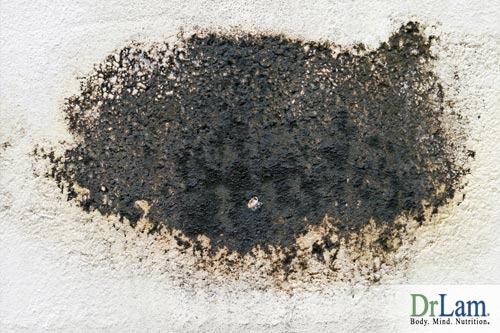 Molds fall into one of three categories, depending on how the human body responds when exposed. The first are allergenic, which means they will not cause you problems unless you are sensitive to them. The second category are pathogenic molds, meaning they can cause infection in those who are immunocompromised, or if you are exposed to high concentrations. The last group are the toxigenic molds. Toxigenic molds are often referred to as toxic mold or black mold, though their color can vary. Where allergenic molds only affect those who are allergic to them, and pathogenic molds typically only affect those who are immunocompromised, toxic molds can have serious negative effects on anyone.
Molds fall into one of three categories, depending on how the human body responds when exposed. The first are allergenic, which means they will not cause you problems unless you are sensitive to them. The second category are pathogenic molds, meaning they can cause infection in those who are immunocompromised, or if you are exposed to high concentrations. The last group are the toxigenic molds. Toxigenic molds are often referred to as toxic mold or black mold, though their color can vary. Where allergenic molds only affect those who are allergic to them, and pathogenic molds typically only affect those who are immunocompromised, toxic molds can have serious negative effects on anyone.
Unfortunately, it is impossible to identify mold just on appearance, as many molds appear similar. Mold can take on a whole rainbow of colors, depending more on variable factors like what the mold has been feeding on than the particular type of mold. Accurate identification of mold strains requires examination under a microscope.
The mycotoxins produced by mold spores can be inhaled or ingested. Different strains of mold produce different types of mycotoxin mold toxicity symptoms. Some of these are relatively mild, generally affecting only those who are sensitive. Others, particularly those produced by toxic mold, are quite potent and can affect every system and organ in your body, including the brain. Scientists aren’t entirely sure why mold spores produce these mycotoxins, but believe they give the molds an evolutionary advantage when competing against other organisms.
If you have mold growing in your home, there is also a very good chance you could have bacteria growing alongside it. Many types of bacteria can be found growing in the same conditions that are hospitable to mold, and the mold and bacteria often work synergistically to aggravate mold toxicity symptoms such as inflammatory health conditions. In many cases, people who experience fungal infections from mold exposure may also experience bacterial infections. Remedying these different types of infections simultaneously can be complicated.
Mold spores are everywhere, but usually in such low concentrations that they are harmless. However, when conditions are right, they land on a damp surface and begin to grow. When we talk about having mold in your home, we’re not talking about the minute concentrations of airborne spores waiting for conditions to be right. We’re talking about a mold colony actively growing and producing new spores.
Molds prefers to grow in dark, hidden places, so they can often go undetected until the problem is very severe. However, there are a few red flags that can clue you into the possible presence of mold.
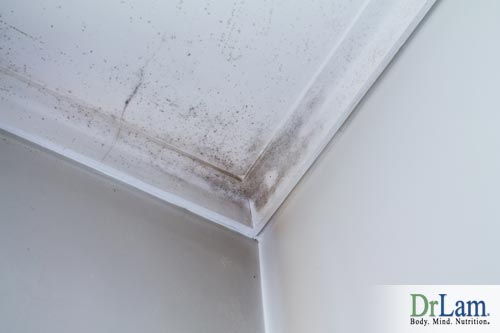 This is the most obvious sign of mold, but one that people frequently overlook. Small areas of mold growth may look like a bit of dust or soot, or may seem innocuous because it’s such a small patch. If you see a small amount of mold, you can be sure there is a whole lot more that you can’t see. Even if you’re lucky, and there isn’t a whole lot more behind the walls, mold should still not be ignored, because it’s only a matter of time before it starts to grow, and even a small mold colony can produce spores that could negatively affect your health causing mold toxicity symptoms.
This is the most obvious sign of mold, but one that people frequently overlook. Small areas of mold growth may look like a bit of dust or soot, or may seem innocuous because it’s such a small patch. If you see a small amount of mold, you can be sure there is a whole lot more that you can’t see. Even if you’re lucky, and there isn’t a whole lot more behind the walls, mold should still not be ignored, because it’s only a matter of time before it starts to grow, and even a small mold colony can produce spores that could negatively affect your health causing mold toxicity symptoms.
In some cases, it can be easy to overlook mold simply because it doesn’t appear how you expect. Mold can be black, grayish brown, grayish green, or even white and thready. If mold grows behind vinyl wallpaper, it may even be orange, pink, or purple. Any time you see anything that doesn’t look right, removal is a good idea.
Mold can grow in many different environments, but the one thing that is absolutely critical is moisture. If you see signs of excess moisture in your home, you can assume that if mold isn’t currently growing, it could start at any time. Even old water damage could indicate the presence of mold. Signs to look for include condensation around windows, discoloration along walls, wallpaper or paint that begins to bubble or peel, warped wood, and standing water. If you notice signs of moisture, especially if you’ve had a problem for a while, you might well have mold. If the problem suddenly appears, be sure to deal with it immediately. In the right conditions, mold can begin to grow within 72 hours, causing mold toxicity symptoms
Also, be sure to keep your gutters clear and take steps to ensure rainwater does not collect around your foundation. Clean up any flooding as quickly as possible.
Not all strains of mold are detectable by smell, but many are. If you notice a musty odor, be sure to thoroughly inspect your home. Just because you can’t see it doesn’t mean it isn’t hiding in the walls. Be sure to check closets, attic, basement, under sinks, under and behind appliances, around windows, and any areas that may be subject to moisture. If possible, be sure to look behind walls. You might also consider consulting a specialist to inspect your home for mold.
This is one sign that most people don’t think of, but if you have a lot of dust, you might have mold. Household dust is made up primarily of organic matter, excellent food for mold. Dust can also transport mold around the home. Also, mold likes hidden places. If an area has a lot of dust, it’s because the area doesn’t get much attention.
 If you start experiencing any unexplained symptoms that don’t improve in a reasonable time, or symptoms that seem to improve when you leave the house, only to worsen when you get home, they may be mold toxicity symptoms or some other indoor air pollutant. Whether the culprit is mold or something else, you need to find out what it is in order to determine the best plan for abatement.
If you start experiencing any unexplained symptoms that don’t improve in a reasonable time, or symptoms that seem to improve when you leave the house, only to worsen when you get home, they may be mold toxicity symptoms or some other indoor air pollutant. Whether the culprit is mold or something else, you need to find out what it is in order to determine the best plan for abatement.
Medicine has long recognized the link between the brain and the hypothalamus, pituitary, and adrenal glands, known as the neuroendocrine system. As it turns out, the conventional model of how the body manages stress, both the physical (such as handling the removal of toxins) and the psychological, is incomplete.
According to the conventional stress model, the brain receives signals from the senses. The brain then interprets these signals and decides what to do with the information. If the brain perceives these signals as stressful, it triggers the hypothalamus, the pituitary gland, and the adrenal glands to produce certain hormones and neurotransmitters to help the body deal with the stress. However, this approach is incomplete. Taking a functional approach to medicine, it becomes clear that focusing too much one specific organ, or even one specific system, at the expense of the whole being, is to ignore many vital interactions between various systems.
When we talk about the metabolism in regards to the stress response, we are talking about how the cells carry out chemical reactions to produce energy, how the cells manage the inflammatory response, and how they work to remove toxins, such as those produced by mold. When the metabolism is healthy and working efficiently, the body is able to remove these and other toxins with little difficulty. When the metabolism is not working well, detoxification is impaired and toxins begin to build up, increasing stress on the body, which leads to increased demands on the endocrine system and mold toxicity symptoms.
The NEM system, then, refers to the interactions not just of the central nervous system, endocrine system, and metabolism, but the interplay of all organs and systems in the body. This includes the immune system, the cardiovascular system, and the respiratory system. Anything that happens in one part of the body will directly affect every other part.
All of these systems are activated automatically, around the clock, as needed and without any conscious input. However, these systems are not meant to be in action constantly. When these systems are in perpetual overdrive, such as when the body is under prolonged stress, as can occur when exposed to mycotoxins from mold over a long period of time, these systems begin to break down and become unable to function adequately, causing mold toxicity symptoms.
Some of the mycotoxins produced by molds are neurotoxic, producing a variety of central nervous system symptoms. Indeed, nearly three-quarters of all people who have been exposed to toxic mold display some degree of neurotoxicity. One of the reasons for this is because mycotoxins have a unique ability to access the brain. Many toxins are prevented from reaching the brain by the blood-brain barrier. However, the olfactory system, the sense of smell, has a direct line of communication to the brain.
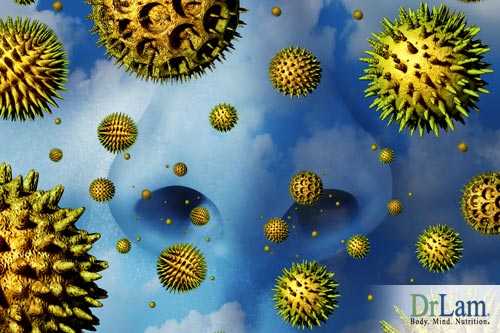 This means inhaled toxins, even those with no detectable odor, also have a direct line to the brain. Some research has found that mycotoxins may even be able to access the brain via the optic nerve. These pathways allow mold to cause chronic sinusitis and even brain complications.
This means inhaled toxins, even those with no detectable odor, also have a direct line to the brain. Some research has found that mycotoxins may even be able to access the brain via the optic nerve. These pathways allow mold to cause chronic sinusitis and even brain complications.
Mold can inhibit the ability of the hypothalamus to properly stimulate the pituitary gland, resulting in hormonal imbalances in organs such as the thyroid, the adrenal glands, and the reproductive organs. These types of mold toxicity symptoms can lead to severe depression and chronic fatigue, as the body becomes overwhelmed by the toxic load.
Supporting the adrenal glands is critical for anyone exposed to mold, especially those suffering from adrenal fatigue. When exposed to mycotoxins, the body mounts an inflammatory response. The adrenal glands then attempt to reduce the inflammation by releasing cortisol. Healthy individuals may experience few, if any, ill effects. Those suffering from adrenal fatigue, however, will struggle to produce enough cortisol to reduce the inflammation, and will likely experience significant symptoms of adrenal fatigue as well as increased inflammation.
The fact is, when your system is impaired, nearly anything can negatively affect your health. The immune system cannot effectively fight off invaders, the metabolism is unable to process and eliminate toxins, and the endocrine system is unable to produce the hormones needed to mitigate the effects of toxins.
This is a good reason to find a healthcare provider who is willing to perform a comprehensive evaluation if you ever find yourself with unexplained symptoms.
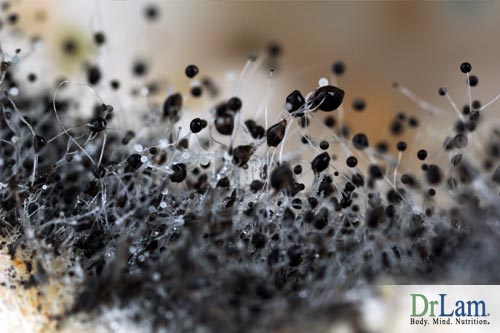 Scientists have identified more than 200 different mycotoxins, some of which's mold toxicity symptoms can interfere with the body’s ability to synthesize RNA and may also cause damage to the DNA. Mycotoxins are lipid soluble, which means they tend to accumulate in the fat cells, and are easily absorbed in the mucosal linings of the lungs and digestive tract. The mycotoxins produced by two types of mold in particular have been the objects of much scientific research due to their highly toxic natures.
Scientists have identified more than 200 different mycotoxins, some of which's mold toxicity symptoms can interfere with the body’s ability to synthesize RNA and may also cause damage to the DNA. Mycotoxins are lipid soluble, which means they tend to accumulate in the fat cells, and are easily absorbed in the mucosal linings of the lungs and digestive tract. The mycotoxins produced by two types of mold in particular have been the objects of much scientific research due to their highly toxic natures.
Stachybotrys Chartarum is the strain of mold most commonly referred as ‘Black Mold’. This type of mold is typically greenish black and slimy, though it may also appear grayish and powdery. Stachybotry can be mistaken for Aspergillus, Cladosporium, Alternaria, and Drechslera. If you find mold in your home or suspect your mold toxicity symptoms may be of this toxic variety, you may wish to consult with an expert for definitive identification before mold toxicity symptoms appear.
Stachybotrys loves feeding on materials that are high in cellulose, including wood, wicker, cardboard, fiberboard, and drywall. This type of mold requires a lot of moisture to grow well. Stachybotrys produces trichothecenes, a mycotoxin first studied in Russia during the 1920s after cattle that had been fed moldy hay began to die.
Poisoning caused by Stachybotrys mycotoxin is called stachybotryotoxicosis. Studies have found this toxin to be as much as 40 times more potent when inhaled than when ingested. The good news is that a mold colony does not always produce spores. Production of mold spores depends on a number of environmental factors, including the growth medium, temperature, food source, pH, and humidity, among other factors, some of which may not yet be known. Because mycotoxins occur in the mold spores, if the mold colony is not producing spores, there are no mycotoxins.
Stachybotrys spores are particularly hardy, able to survive temperatures as high as 500 degrees fahrenheit as well as tolerating exposure to highly caustic agents such as acid and bleach. In one study, stachybotrys spores found on sedimentary rocks dating back two million years began to grow when placed in favorable conditions.
Mycotoxins from Stachybotrys have been shown to damage the immune system and cause damage to the lymph nodes and bone marrow. In animal studies, injecting the stachybotrys mycotoxins caused severe hemorrhaging from various organs. Humans exposed to the mycotoxins have experienced mold toxicity symptoms including flu-like illness, respiratory issues, cognitive difficulties, muscle aches, sore throat, headaches, rash, fatigue, and even hemorrhage.
Aspergilli are among the most prevalent environmental molds, most often found in compost heaps and other decaying plant matter. In your home, it may take up residence in heating and air conditioning ducts, insulation, and sometimes on food. There are several strains of Aspergilli, most of which are generally harmless, but can sometimes can cause serious illness in those with compromised immune systems or those who suffer prolonged exposure. Those who are allergic to aspergillus can have fever, cough, phlegm, or asthma attacks.
 Aspergillus infection is known as aspergillosis, which is actually an umbrella term referring to a group of infections. These mold toxicity symptoms may range from mild respiratory infection to severe systemic infection. Invasive aspergillosis is an infection that occurs when aspergillus invades the circulatory system and spreads throughout the body to other organs. In some cases of aspergillosis, a tangled ball of fibers, known as an aspergilloma, can begin to grow in the lungs. This can lead to wheezing, shortness of breath, fatigue, weight loss, and coughing up blood. Correcting aspergillosis involves intravenous antifungal medication and may require surgery.
Aspergillus infection is known as aspergillosis, which is actually an umbrella term referring to a group of infections. These mold toxicity symptoms may range from mild respiratory infection to severe systemic infection. Invasive aspergillosis is an infection that occurs when aspergillus invades the circulatory system and spreads throughout the body to other organs. In some cases of aspergillosis, a tangled ball of fibers, known as an aspergilloma, can begin to grow in the lungs. This can lead to wheezing, shortness of breath, fatigue, weight loss, and coughing up blood. Correcting aspergillosis involves intravenous antifungal medication and may require surgery.
Determining the presence of bacterial infections is relatively easy, as bacterial infections trigger a rise in white blood cells. Fungal infections generally do not affect the immune system in this way. Fungal infections do, however, trigger the localized production of a specific type of white blood cell, known as eosiniphils. These cells are an important mold toxicity symptom. These cells are typically seen in allergic reactions and when parasites are present. Because these cells are typically localized to the area of infection, they may not be seen in bloodwork.
If you suspect you have mold toxicity symptoms, it is vital to find a doctor with significant experience in environmental medicine who is willing to perform a comprehensive workup. This may include metabolic panel, blood sugar test, tests for kidney and liver function, tests for serum antibodies to mycotoxins, immune tests, lymphocyte panels, gamma globulins, blood and urine tests for mycotoxins, pulmonary function evaluation, pupillometry, heart rate testing, neurological testing, EEG, brain imaging, visual sensitivity testing, hearing testing, and thyroid testing.
Mold spores are everywhere. Short of a strictly controlled clean room, they are impossible to completely get rid of. However, mold spores require certain conditions to grow. They need moisture, organic material to feed on, and oxygen. They grow best in warm temperatures, but can grow in a wide range of temperatures.
If you find mold in your home, it’s best to call in a professional, because it can be difficult to determine just how extensive the problem might be. By the time mold is obvious, what you can see is usually just a small part of the problem. Whether you do it yourself or you call in a professional, it’s important to know what to expect.
Before starting mold remediation, it’s important to contain the mold. During the removal process, the mold and its spores will become airborne. Without proper containment, the airborne mold spores are likely to settle on other surfaces, causing the problem to spread. The best containment uses negative air pressure. Negative air pressure ensures airborne mold will not escape the containment area. An air purifier with a HEPA filter should be used to clean the air and remove airborne mold.
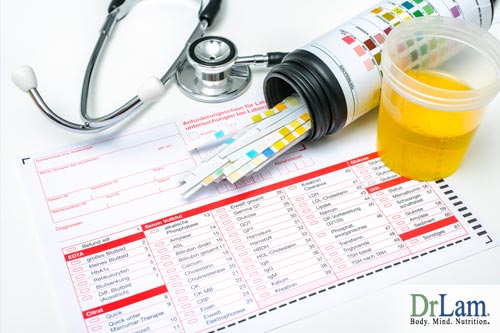 If you attempt to remediate the mold yourself, be sure to use protective gear. At a minimum, this should include a respirator, latex gloves and goggles. A protective suit will offer additional protection. If you call in a professional, look for someone who is certified by an organization such as the IICRC (Institute of Inspection, Cleaning and Restoration Certification) or NORMI (National Organization of Remediators and Mold Inspectors).
If you attempt to remediate the mold yourself, be sure to use protective gear. At a minimum, this should include a respirator, latex gloves and goggles. A protective suit will offer additional protection. If you call in a professional, look for someone who is certified by an organization such as the IICRC (Institute of Inspection, Cleaning and Restoration Certification) or NORMI (National Organization of Remediators and Mold Inspectors).
After all the protective equipment is in place, the cleanup can begin. Affected drywall and other items should be carefully bagged and removed. Wall studs and other items that cannot be easily removed must be thoroughly scrubbed with hot, soapy water and scrub brush. HEPA filtered sanders, chisels, or other tools may be called for if the mold is extensive. If building studs or other parts of the building’s structure have significant mold, you may want to consult with a professional contractor to ensure the structure of the building has not been weakened. Professional remediators typically follow up with disinfectant to kill any bacteria that may be growing alongside the mold. This will help prevent any mold toxicity symptoms from starting.
After all affected items have been removed or scrubbed, the area must be thoroughly dried to ensure any remaining spores do not regrow. If you have clothing, furniture, or other items that have been affected, it may be possible to salvage them, but you may wish to consult with someone who specializes in restoration of items damage by mold so as to avoid further damage.
After the mold has been removed, there may be some lingering odors from the mold, as well as the chemicals that may have been used during cleanup. An ozone generator can remove most odors, even those that are difficult to get rid of. When using them at high levels, they can be dangerous, so be sure to evacuate the house, then air it out for twenty minutes before returning. It’s important to understand that ozone air purifiers do not actually capture pollutants. Rather, they remove pollutants by oxidizing them. Regardless of what kind of air purification you choose, it’s no substitute for removing the mold that is releasing the spores.
Finally, if you have mold, there is a very good chance you have a moisture problem. It may be a plumbing leak, or flooding, or condensation, or something else. Whatever it is, it’s critical to address the moisture problem in order to ensure the mold does not have an opportunity to regrow.
It is important to note that removing mold requires the use of many chemicals. If you are in advanced stages of adrenal fatigue, adrenal exhaustion, or if you have liver congestions, extracellular matrix pollution, or history of multiple chemical sensitivities, these chemicals can wreak havoc on your body. It is important to wear as much protection as possible, as well as vacate the area for up to a week while the fumes dissipate.
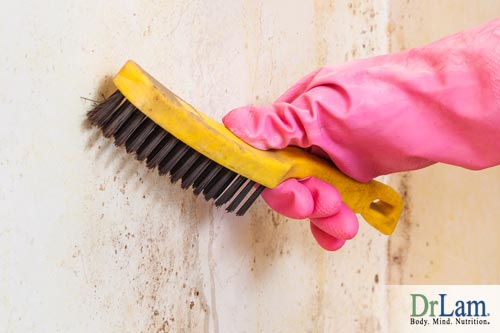 Sufferers of advanced Adrenal Fatigue Syndrome are particularly vulnerable to retarded recovery in the presence of mold in the home. Exposure to toxic mold during the clean up period may trigger more extensive toxification of their systems, as well as adrenal crashes. Often time, the best solution is simply to move residence if mold is suspected because no matter how much one does, it is very hard to remove 100% of all toxic mold. Healthy people can live with a small amount of mold, but sensitive people cannot.
Sufferers of advanced Adrenal Fatigue Syndrome are particularly vulnerable to retarded recovery in the presence of mold in the home. Exposure to toxic mold during the clean up period may trigger more extensive toxification of their systems, as well as adrenal crashes. Often time, the best solution is simply to move residence if mold is suspected because no matter how much one does, it is very hard to remove 100% of all toxic mold. Healthy people can live with a small amount of mold, but sensitive people cannot.
People that are exposed to mold for a long time can have many health issues such as respiratory problems, aches, and pain, skin rashes, immunosuppression, gastrointestinal problems, headache, anxiety, brain fog. All these symptoms can cause additional stress for the adrenals.
"This site is a great resource."
"This site is a great resource. It has helped me immensely and probably hundred of thousands of other people. Thank you, Dr. Lam, for your service to humanity."